Inspired by this summer's Olympic quest for gold medals, I opt to go for the gold myself. Toshimaen amusement park in Tokyo's northwestern Nerima Ward is home to Carousel El Dorado, one of the world's oldest hand-carved wooden merry-go-rounds. Named for an imaginary city of gold sought by 16th-century Spanish conquistadors around the Amazon basin, the El Dorado I seek is nonetheless real, and located near the piranha-free Shakuji River.
Exiting the Oedo Line's Toshimaen Station, I find the day hot as a hibachi grill. Smoke from nearby venders cooking up skewers of chicken and squid fills the air. Five minutes here and I'll be grilled too, I think.
I hustle to the shade of the amusement park's ticket booths, where customers line up with towels, swimsuits, and flipflops. They're here for Toshimaen's summer attractions, the various pools and a complex of water slides called Hydro Polis. Waiting to enter, I note a Hydro Policy: If you've got ink, you sink. Turns out tattoos are strictly forbidden throughout the park.
Once inside, the park's mist pipes suspended overhead between trees cool things off a bit. I meet up with Kyoko Sukegawa, Toshimaen's 55-year-old pixielike planning-management section head, who tells me the park was the brainchild of Yoshisaburo Fujita, a wealthy Tokyo family man with five children to amuse. Fujita's initial 1926 design, which I see on a map Sukegawa shows me, once had facilities for tennis, baseball and track sports; these are gone, but the park's amusement rides, water slides and dining facilities are in nearly the original locations.
One thing that appears to be missing is Fujita's formal Japanese garden. "That's still there, in the Niwa-no-Yu Onsen spa," Sukegawa pipes up. "The current garden was designed by renowned landscaper Kenzo Ogata." I'm not allowed to photograph it, Sukegawa says, and while a spa visit is tempting, I'm for now focused on gold.
I zip past Flying Carpet, a ride decorated with peeling Arabian figures, poignant with a patina of days gone by. To my left, on the roof of a building, Troika and Break Dance rides shake and bake visitors. The whole park has a retro, county-fair feel to it. Nothing quite prepares me, though, for the time-slip elegance of the Carousel El Dorado.
Crafted in Leipzig, Germany, in 1902 by carousel master Hugo Haase, the ride was originally fashioned for the emperor of Germany, Willhelm II. It once featured a 13-meter-high facade with lions, peacocks and a golden chariot formed in zinc. The El Dorado toured Europe, then was bought in 1910 by John Jurgens, who installed it in New York's Coney Island near Dreamland Park. The following year, when Dreamland burned down, the singed carousel was bought and repaired by George C. Tilyou, who built a fireproof enclosure for the ride in his Steeplechase Park. Steeplechase Park closed in 1964, when Tilyou's land was purchased by the Trump family, and the park rides were dissembled and sold.
Fortunately, the El Dorado was purchased for the 1970 Osaka World's Fair. Shipped across the Pacific in pieces, the merry-go-round was reassembled and, after the fair, found a home at Toshimaen.
The El Dorado boasts velvet chariot seats, galloping horses with real fur tails, and even saddled pigs to mount. Its three tiers, each moving at a different speed, are decorated with etched mirrors, more than 1,000 bulb lights, angels with trumpets and ceilings of cherubs. Though this art nouveau beauty has been designated a Mechanical Engineering Heritage treasure in Japan, to most tots and couples it's just a gentle rocking-horse ride.
When I ask Sukegawa about rumors that Toshimaen's lands will be appropriated as emergency evacuation grounds for Tokyo, she shrugs. "I don't think it will happen soon," she says. It's nice to imagine that for the time being, at least, El Dorado's golden years are secure.
Shrieks rend the air, rides spin overhead and newer jet coasters thunder by as I wander the rest of the park. The sun blazes down, and subconsciously I seek out water. When I find some, 28-year-old Shunsuke Furukawa tells me he can walk on it. A three-year veteran of the Aquaroll and Aqua Bubble attractions, Furukawa zips himself into a clear plastic bubble and runs off across the surface of a small pool.
"It's harder than it looks," he tells me on his return, out of breath. "It's a matter of balance." I ask him what it's like, helping children in and out of these bubbles all day. "I used to be an irritable person," he says thoughtfully, smiling at the question. "But this job has changed me, made me more patient."
On that happy bubble of a thought, I leave the carnival behind, and head off to explore the neighboring area. On the opposite side of Toshimaen's subway station, I spot a temple. And another. Then two more. Gradually I realize I've hit on a whole street of Jodo-shu (Pure Land Sect) Buddhist temples, 11 to be exact. I glance in at each, admiring the variety of gardens, gates, incense burners and jizō (bodhisattva statues).
One temple, however, is mesmerizing. Kojo-in's outer gates frame a dioramalike scene inside. Layer upon layer of lambent green and gold maple branches nearly obscure the temple itself, whose windows merely reflect the maples. Perhaps it is the extreme heat of the day, but walking inside, I feel moved. Suddenly glass wind-bells, hung at regular intervals along the temple's path, pick up a slight breeze and tinkle from all directions. The effect is otherworldly.
Further along, in front of Kuho-in, I check out a sign explaining the temple's soba-eating jizō dating from the Edo Period (1603-1867). The story goes that a monk frequented one particular soba noodle shop. The soba-master, intrigued by the monk's reticence to talk about himself and worried that he might actually be a shape-shifting fox, followed the monk one night. To the soba-master's surprise, the monk walked to a nearby temple, then seemed to vanish into a stone jizō. Later that night, as the soba-master was about to doze off, the voice of the jizō came to him, thanked him for the soba, and promised to protect him and his family forever. I make a mental note to bring soba noodles next time I visit.
I amble to the street's dead end, in this case accurate nomenclature, as all 11 temples employ the cul-de-sac for their graveyards. Tending the site are incense- and flower-seller Yasuko Sakata (62) and tombstone real-estate advisor Katsumi Nakayama (55). They explain to me that the 11 temples on this street moved here from the Asakusa area after the Great Kanto Earthquake of 1923. This may explain why the site features a brand new memorial to the victims of the recent Great East Japan Earthquake.
Sakata shows me around the graveyard, and we stop to offer incense at a muen botoke-san, a collective grave site for deceased with no known relatives. "Many old people come to pay respects, and part of my job is to talk to them, and to listen," Sakata says.
From a tree behind a tombstone, she collects up fallen plums, mauve and glaucous. "Take these," she offers. "They're very sour, but put them in the sun for a few days and they'll get sweet." With sun like this, I'll have prunes in a flash, I fear. Thanking Sakata, I move on.
In front of Kuho-in again, I follow a black and white cat into the temple's garden, a karasansui (dry landscape) beauty. Suddenly, a guy enters the temple gates behind me, walks up to the temple doors and unlocks them. "Come on in," he says, and I follow.
Masao Fujiki, it turns out, is the 58-year-old head priest of Kuho-in. "I'm a bad priest," he tells me, adjusting the collar on his polo shirt. "Oh?" I say, mildly apprehensive. "I'm usually not here," he clarifies, then explains that his work for NPOs, building schools and raising donations for children's health in countries such as Laos and Myanmar, means he is rarely available.
We chat for a while about architecture and volunteer work and gardens. I mention being impressed by Kojo-in. "That's my main temple," Fujiki says, explaining that he has recently taken on Kuho-in, in the absence of others to do so. No wonder he's so busy.
Hoping to take Fujiki's photo, I ask if he would mind putting on his priest's robes. He obliges, swiftly, the handsome diaphanous outer robe nonetheless failing to hide the polo shirt. The sun pouring in from outside makes getting a good exposure a nightmare. Finally, I find a perfect spot, in front of a noren curtain of flying birds. "This is just great," he says, "I'm posing in front of the toilets!" We dissolve in laughter, and by the time I leave I'm inclined to think Fujiki is in fact a very good priest.
Still musing on the graces of the day, I stop in at a small chicken place to grab a bite. Mantendo, across the street from the Niwa-no-Yu spa, has only been open 10 months, owner Tomoe Enomoto tells me. But already, regulars stake out their seats and order up Japanese-style fried chicken, which comes in three flavors: garlic, salt and raiyu (Chinese hot chili oil with garlic). Since the whole day has been hot anyway, I order raiyu chicken, and when the pieces arrive, they are this day's last nuggets of gold.
General admission to Toshimaen is ¥1,000. Pools are open until Sep 2, plus Sep 8 and 9. Winter months offer fishing, futsal and ice skating. www.toshimaen.co.jp.



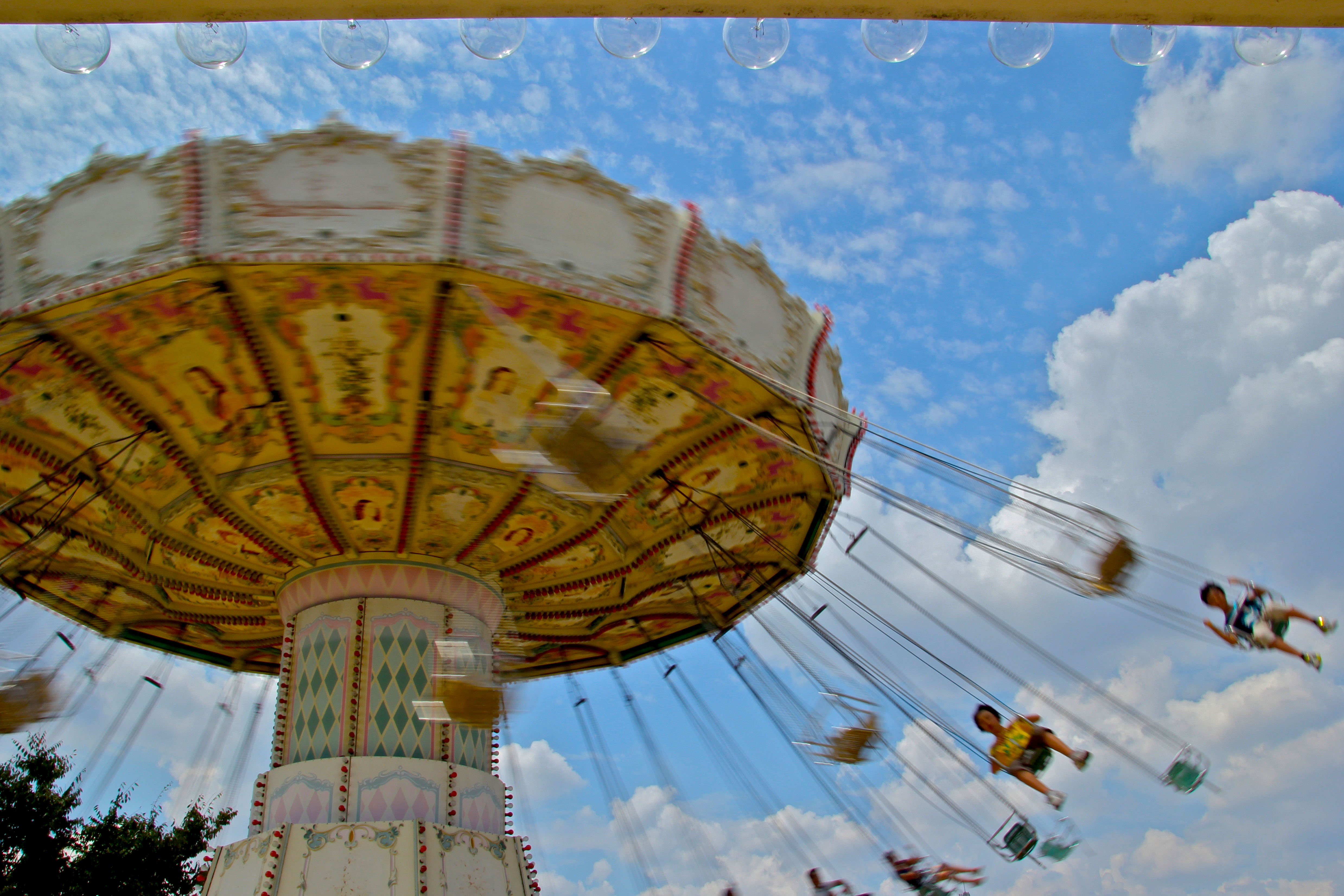
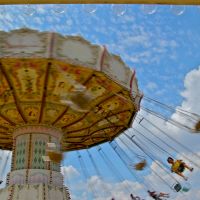
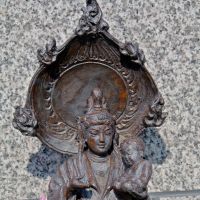
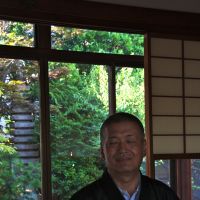
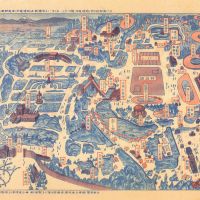
















With your current subscription plan you can comment on stories. However, before writing your first comment, please create a display name in the Profile section of your subscriber account page.